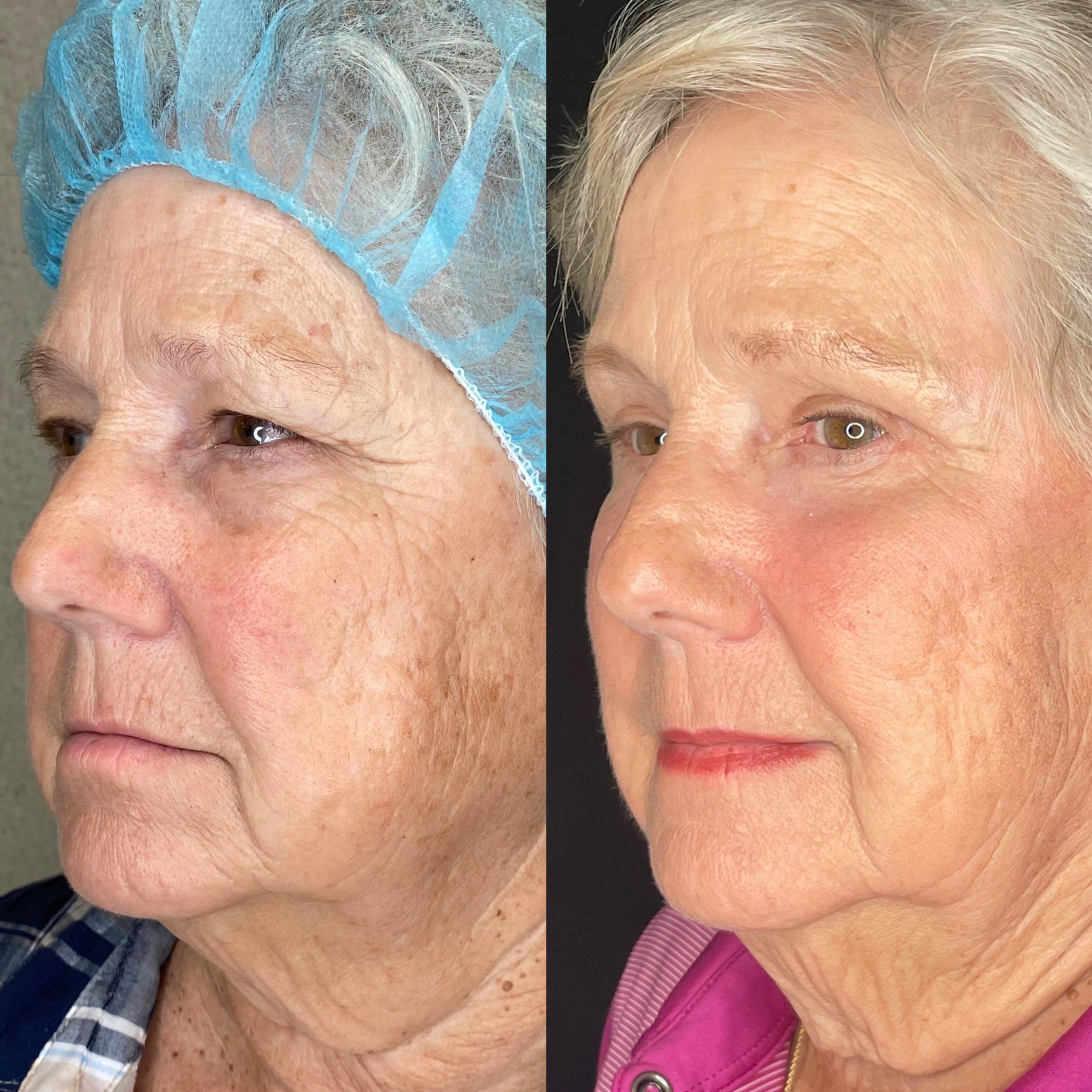Brow Lift
As we age, the brow area can begin to sag and appear heavy, casting a shadow over the eyes and creating the impression of anger, sadness, or exhaustion. A brow lift can make you look more youthful, vibrant and help you better express your emotions.
Benefits of brow lift surgery:
Elevate and reposition the brow line along the natural brow ridge.
Restore a youthful arch to the eyebrows.
Reduce the appearance of sagging upper eyelids.
Improve the appearance of “crow's feet” wrinkles at the corner of the eyes.
Before & Afters
Frequently Asked Questions
How Does a Brow Lift Work?
With this procedure, sometimes called a forehead lift, the surgeon removes excess tissue from the forehead and around the eyes. Then, he or she adjusts the forehead muscles to create a smoother, more youthful profile free of deep wrinkles and loose skin.
Some brow lifts can be done endoscopically with tiny incisions and instruments. Other surgeries require traditional incisions, either behind your hairline or at the top of your forehead, depending on your aesthetic goals for the procedure.
This outpatient surgery is done under either IV sedation and local anesthesia or general anesthesia. Often, clients decide to combine a forehead lift with eyelid surgery or other facial procedures.
Who is a Candidate for a Brow Lift?
Some people have a naturally heavy brow that sags over the eyes as we age. Brow lifts can boost your self-confidence by creating a brighter, more alert, and more approachable appearance. This procedure can also correct an uneven brow for a more pleasing contour.
Clients should be in good health and have realistic expectations for the brow lift procedure. If you smoke, you must quit for several weeks before the procedure and during the recovery period. You must also avoid medications that can increase bleeding, such as aspirin and anti-inflammatory drugs.
What Should I Expect During Recovery?
After this procedure, you may feel some tightness or discomfort, but recovery is rarely painful. However, you should arrange to have someone drive you home and stay with you for the first night after the surgery. Applying cold compresses, elevating your head, and taking over the counter pain medication as directed can resolve your discomfort in the first few days.
Most clients experience some bruising and swelling in the area, which should resolve within 10 days to two weeks. Clients can typically return to work after about a week and resume exercise and more vigorous activities within two to four weeks. Protecting your skin from sun damage by using a sunscreen of at least SPF 30 whenever you go outside can help preserve the results of your surgery.










